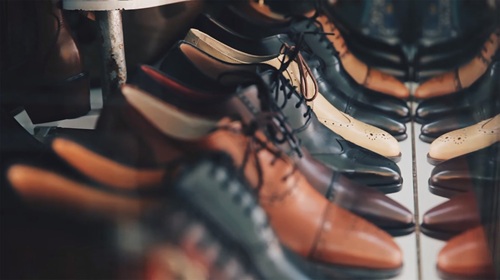In 2025 the Indian footwear industry is navigating a moment of expansion, consolidation and strategic repositioning. Strong domestic demand, rising exports and renewed policy support are colliding with raw-material inflation, supply-chain stress and increasing expectations on sustainability. For manufacturers, retailers and investors, the coming years will be about scale, technology and capturing value across both organised retail and thriving direct-to-consumer channels.
Domestic demand remains the central story. Urbanisation, higher disposable incomes and the growth of athleisure have driven robust demand for mid-to-premium footwear, while value and mass segments continue to be buoyed by tier-2/3 city consumption. Industry estimates put the market at roughly USD 18.7–19.0 billion in 2024, with projections implying strong compound annual growth into the late 2020s. This expanding domestic base gives Indian brands a runway to grow revenues and test premium formats.

Exports are also strengthening, reversing earlier disruptions. India’s leather and non-leather footwear shipments rose sharply in 2024–25, with exports reported at about USD 5.7 billion — a nearly 25% year-on-year increase — signalling that India is increasingly competitive in global sourcing lists for several markets. For exporters and states with manufacturing clusters, this is an important validation of recent investments in capacity and compliance.
Market structure in 2025 is a mix of established mass-market giants, fast-growing domestic challengers and international brands. Companies such as Bata India, Relaxo, Metro Brands, Campus Activewear and Liberty remain influential — each pursuing different strategies: deep retail networks, affordable volumes, brand partnerships or focused athleisure plays. At the same time, D2C brands and private label plays in e-commerce channels are nibbling away at category share, particularly with younger shoppers.
Three structural dynamics will shape outcomes over 2025–28:
- Organised retail & omnichannel maturation. Brick-and-mortar networks remain vital for discovery and fitting, but shoppers increasingly buy via omnichannel journeys — researching online, buying in store or vice-versa. Companies investing in inventory management, store formats and loyalty programs will win repeat business.
- Cost pressures and raw material risks. Leather, synthetic inputs and rubber price movements ripple through margins. Manufacturers are optimising sourcing, moving to longer-term vendor contracts and exploring higher local content to reduce volatility.
- Sustainability and circularity. Regulators, buyers and global brands push for lower carbon footprints, safer chemicals and better end-of-life solutions. Indian producers are upgrading effluent treatment, adopting cleaner tanning (where applicable) and piloting recycled materials to stay export-compliant and win sustainability-conscious customers.
Policy is tilting in favour of domestic manufacturing. The government has signalled plans to extend production-linked incentives to sectors such as leather and footwear to boost local value-addition, attract capex and support exports — a move that, if implemented at scale, could accelerate formalisation and create employment in cluster states. Coupled with state incentives and better logistics infrastructure, policy levers are improving the business case for new and expanded factories.
Challenges
Yet challenges remain. Labour availability and productivity are uneven across clusters; environmental clearances and compliance add timeline risk (especially for leather clusters); and global trade volatility can affect demand and pricing in key buyer markets. Importantly, the fragmented nature of many small footwear firms makes aggregation and standardisation — required to service large global buyers — a work in progress.
Opportunities
Opportunities, however, are plentiful. India can leverage lower wage arbitrage, a skilled shoemaking tradition and improving compliance to win larger shares of global contract manufacturing. Growth segments include athleisure, comfort footwear, performance footwear for sports and protective footwear for industrial applications. Recycled and bio-based material innovations also open product differentiation pathways that command price premiums in export and premium domestic markets.
For businesses and investors the near-term playbook is clear: invest in operational efficiency (modern machinery, waste management, energy efficiency), strengthen omnichannel capabilities, secure long-term raw-material agreements and pursue quality and sustainability certifications demanded by export customers. For policymakers, targeted PLI-style incentives, cluster investment in common effluent treatment and logistics upgrades will deliver disproportionate benefits.
Bottom line: In 2025 India’s footwear industry is on an upward trajectory — larger, more export-oriented and gradually more organised — but success will depend on execution. Companies that combine scale, technology, export readiness and sustainability credentials will be the winners as India converts domestic growth into global opportunity.

